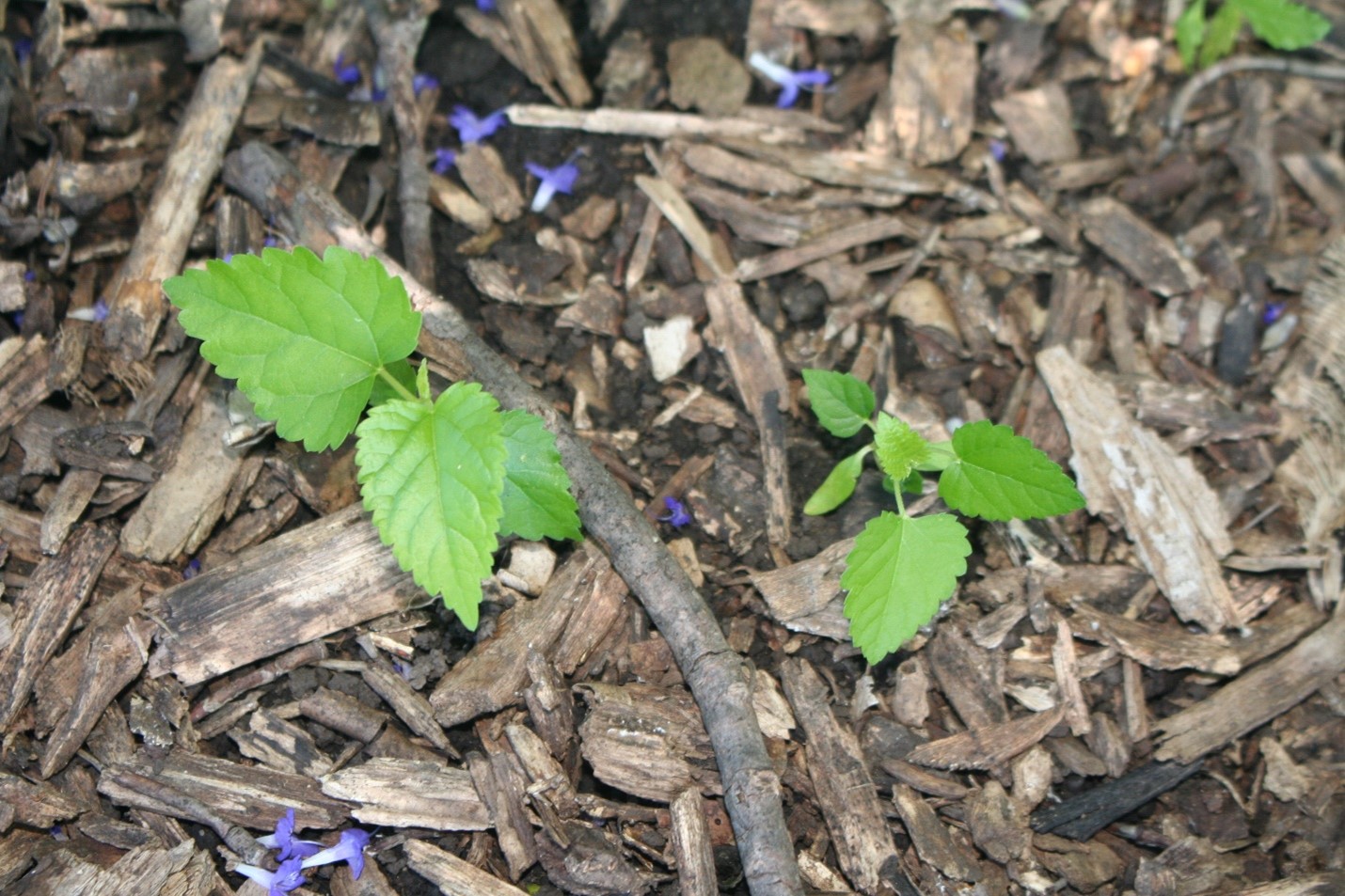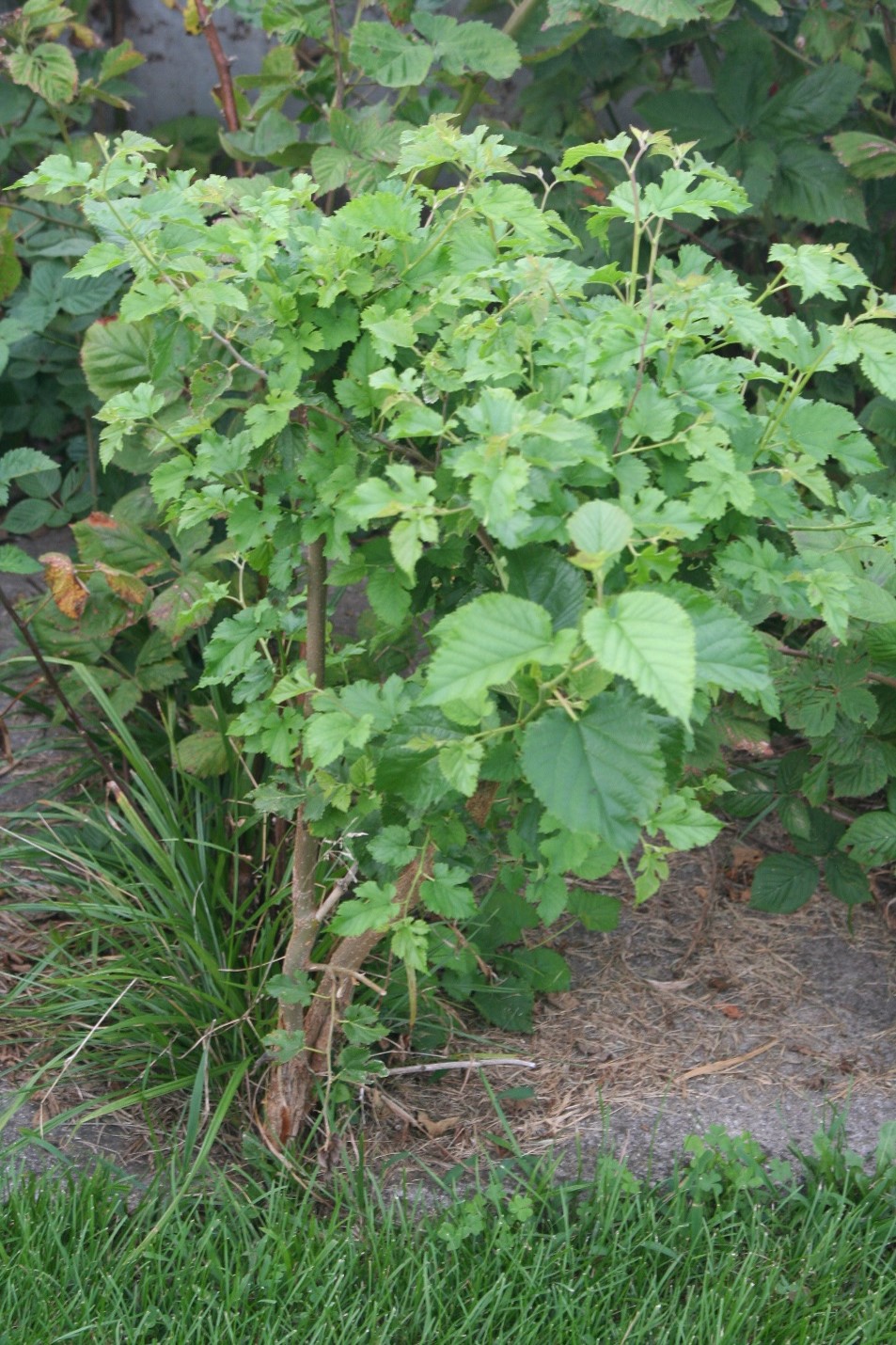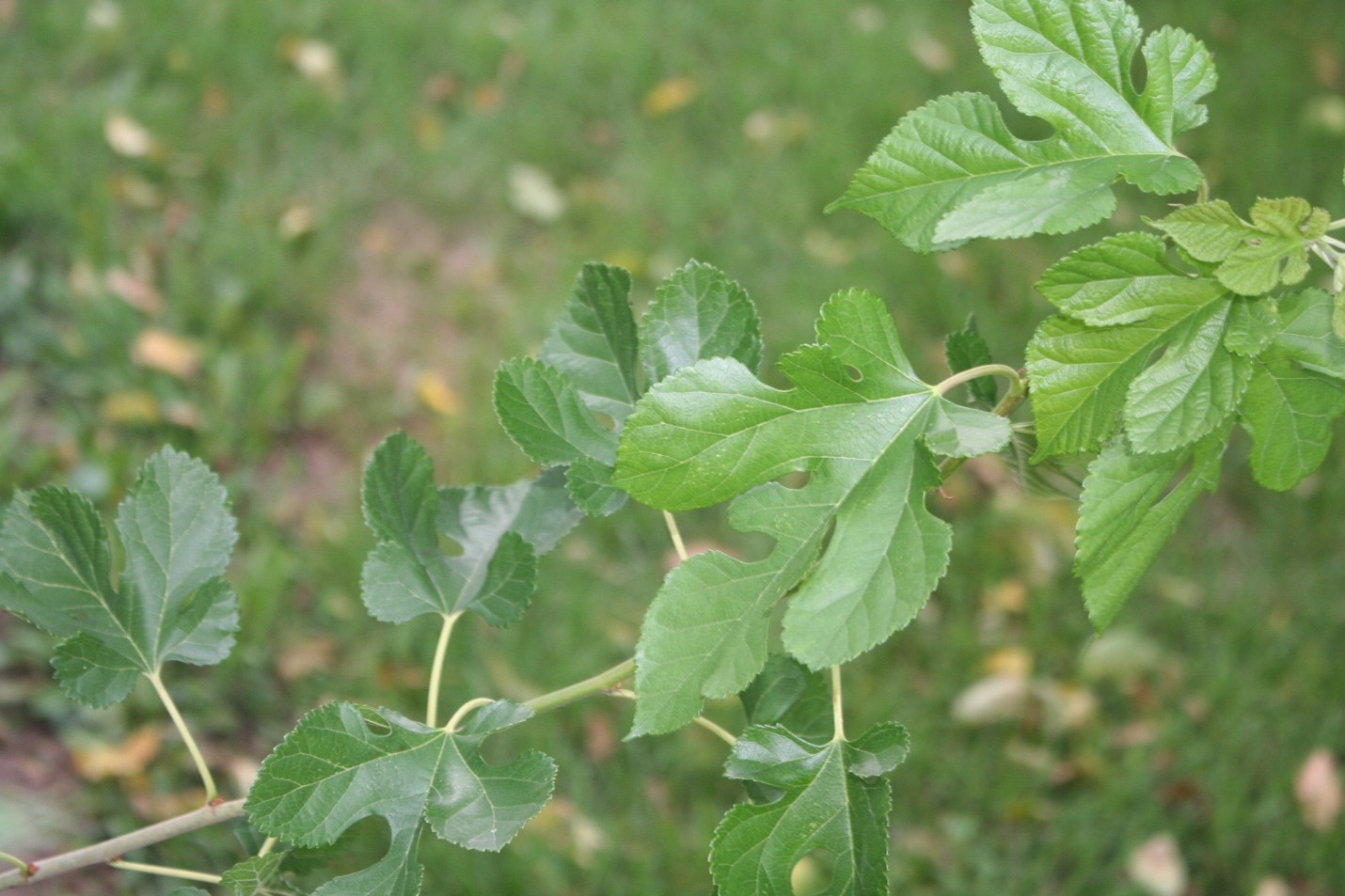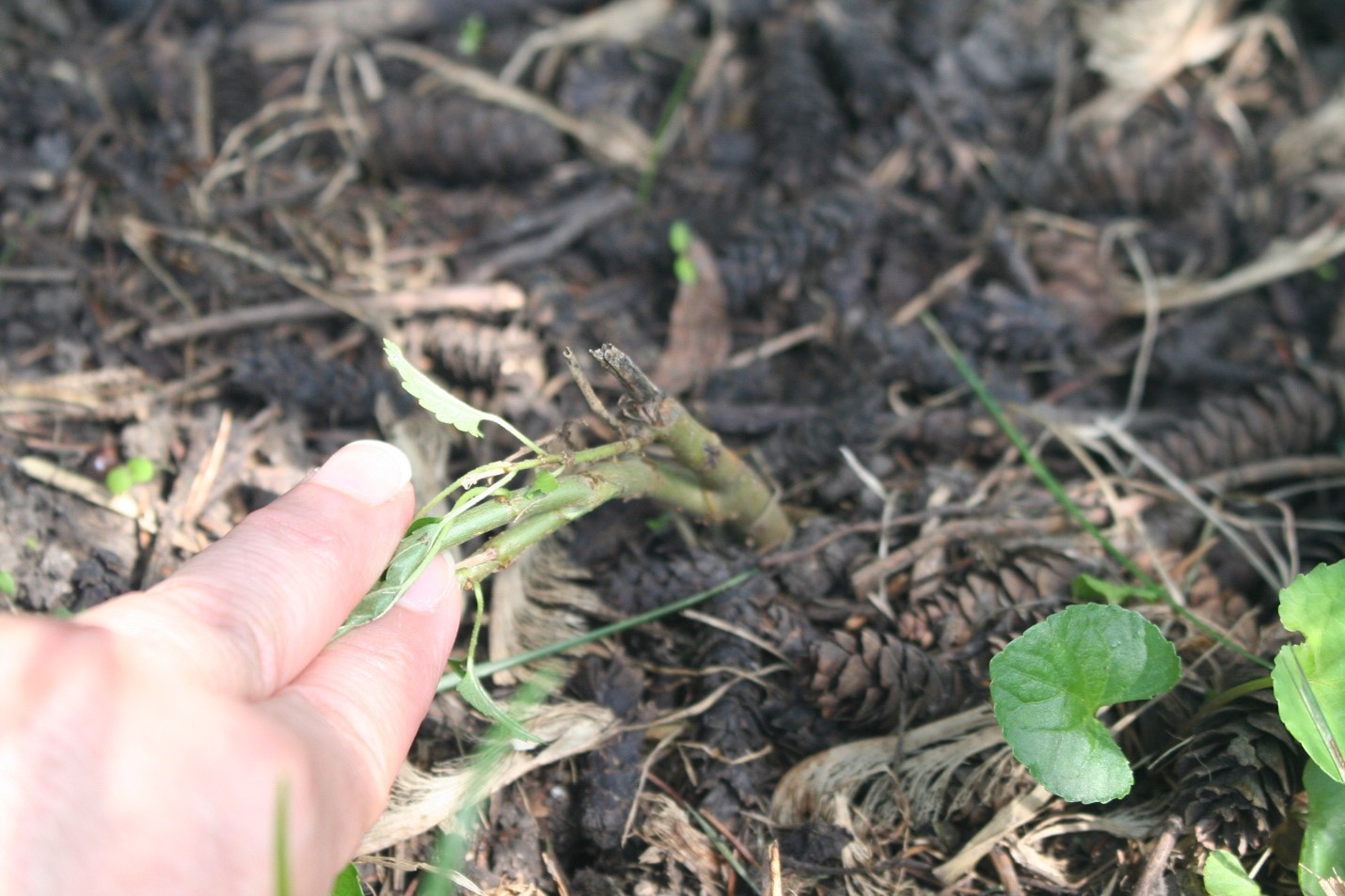Issue 9, August 18, 2022
Controlling Unwanted White Mulberry in the Landscape
I’m going to say this quietly so that my kids don’t hear, but I don’t like mulberry trees. There I said it and some of you may disagree with me. I can handle that.
They are weedy and every year I pull hundreds of baby, volunteer mulberry trees that are destined to populate my flower beds. If my kids hear me complain, they will often beg for me to let them grow. I direct them towards the neighbors’ trees where they can find their fruity fix every summer.

Mulberry tree seedlings, Michelle Wiesbrook, University of Illinois.
White mulberry (Morus alba) is a tree commonly found in urban settings. Mulberry was imported from China in an attempt to establish a silkworm industry. Mulberry served as food for the silkworms. It was introduced in Jamestown, Virginia by the early settlers. The berry-like fruits, similar to small blackberries, are tasty. Birds and mammals agree and help to spread the seeds everywhere and leaving a mess behind them. This tree has a shallow root system which has been known to cause problems around buildings and drains. Mulberry is widely adaptable to a variety of growing conditions. It invades natural areas, landscapes, and roadside ditches.

Unwanted Mulberry tree growing through a small hole in concrete – note the difference in lobing, Michelle Wiesbrook, University of Illinois.
Leaves are simple with minute triangular teeth on the margins. The lobing of mulberry leaves can be quite variable. However, leaves are alternately arranged on the stem. They are shiny and heart shaped at the base. The twigs which exude a milky sap are orange-like in color. They begin as slightly hairy but become smooth with age. The bark is grey becoming orange-brown with shallow furrows. Trees can reach 20-60 feet tall but have weak wood as a result of their fast growth.

Mulberry leaves, Michelle Wiesbrook, University of Illinois.
Mulberry tree seedlings may be pulled easily from the soil, especially after a rain. Young, unwanted mulberry trees have a way of growing unnoticed amongst other taller or larger landscape plants. They are fast growing however, and often once noticed, saplings are not removed easily from the soil without the help of a shovel. Fortunately they are shallow rooted.

Unwanted Mulberry tree appearing out the side of a blue spruce, Michelle Wiesbrook, University of Illinois.

Previously cut back, this Mulberry has new growth. Prevent by digging or applying herbicide. Michelle Wiesbrook, University of Illinois.
If the base of the tree is cut with loppers or a chain saw, don’t be fooled into thinking new growth won’t return. Resprouting typically will soon return due to the stored sugars in the roots unless the cut surface is treated with herbicide within 10-15 minutes of cutting or covered with black plastic and secured to block sunlight. If using a herbicide, look for one that reads brush killer on the label. Typically, products that contain triclopyr can be effective against mulberry trees. Be sure to carefully read and follow all label directions. Herbicide may be applied to the leaves, bark, or cut-surface but the method chosen will depend upon the product formulation, the time of year, and the sensitivity of surrounding vegetation. Larger trees can be cut down and the stump grinded to prevent resprouting. In this situation, no herbicide is needed.
Author:
Michelle Wiesbrook